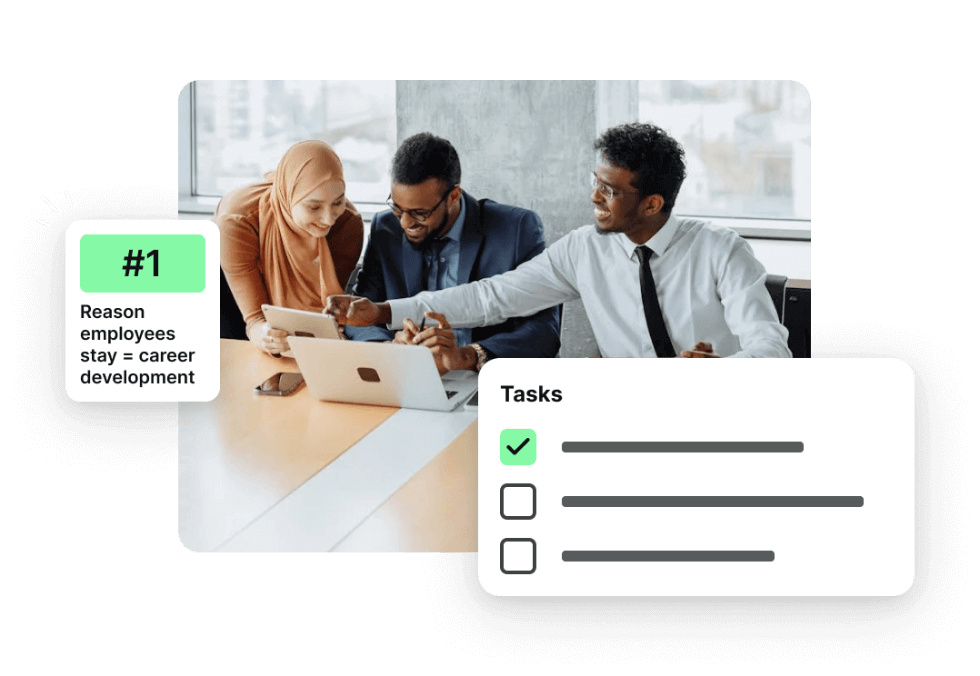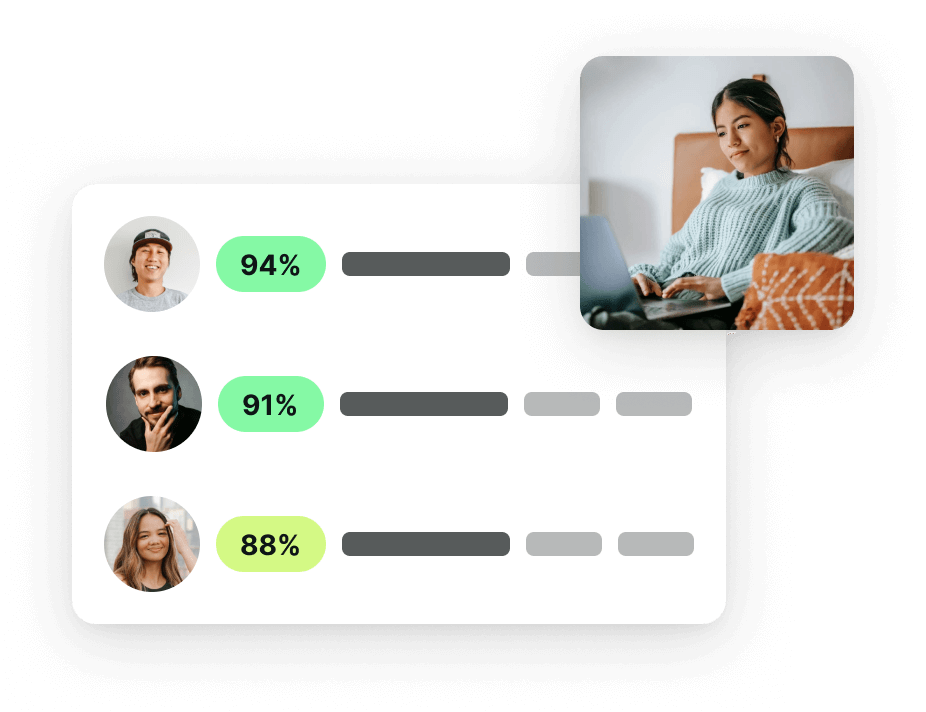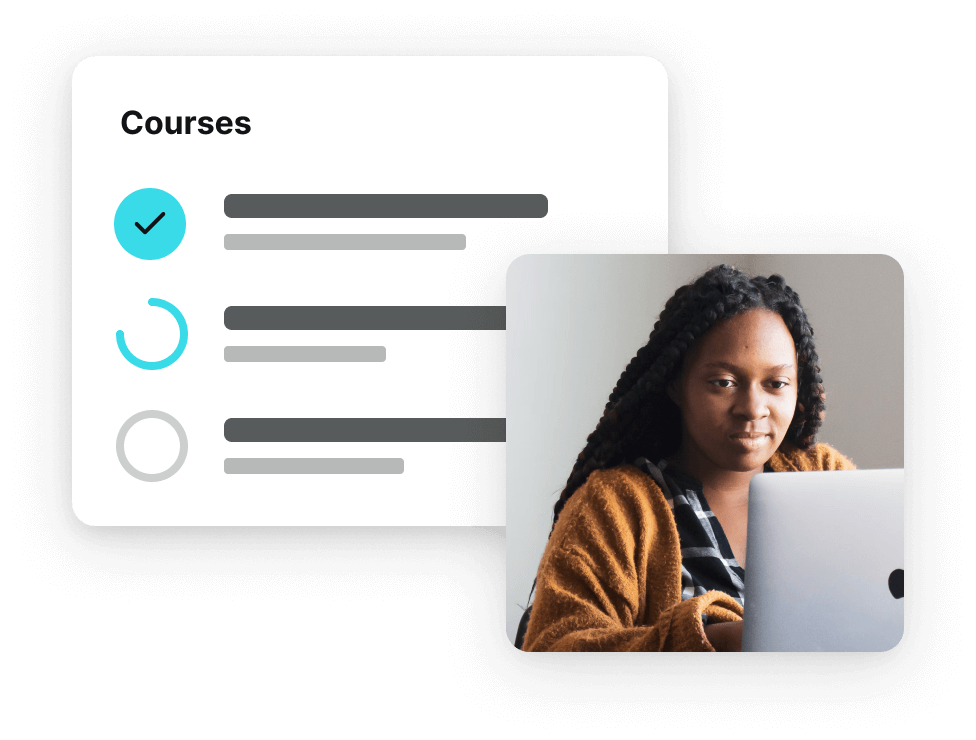🎉 New Guided Conversations Make Mentoring Low-Prep & High Impact Read News Release
Employee Upskilling Strategies
With digital innovation and constantly-changing technology, employers must provide employees with the skills and knowledge needed to tackle new workplace challenges in order to build the workforce of tomorrow.

How to Upskill & Reskill Employees
Today’s leading organizations are losing a race to keep up with the working world’s growing digitization. Without a scalable solution to upskill employees that drives connection instead of isolation, many companies will not be able to keep up. By building effective professional development programs that keep employees connected and learning, employers can address labor shortages and close their skills gaps while reducing turnover and attracting skilled new hires.
The Widening Skills Gap
What is a skills gap? On an organizational level, it’s the gulf between the abilities needed to perform a job and the skillsets of potential hires. The skill gap is a growing (and expensive) problem for companies.
87% Employers
Will Experience Skill Gap In Next Five Years
$8.5 Trillion in Unrealized Revenue
Due to Talent Shortage By 2030
Organizations can close this gap by investing in skills training for current and future employees. However, many companies are not taking advantage of opportunities to upskill and reskill their workforce. According to Deloitte, only 34% of employees are satisfied with their companies’ investment in skills development.
Upskilling Employees
with Chronus Mentoring Software
Guided connection plans drive employee development and career pathing
Chronus guides participants at every stage of the process, boosting engagement rates and outcomes. Set tasks, due dates and reminders while providing participants with helpful resources. Customize each program for your culture and participants’ unique needs.

AI-matching connects participants to the right people and skillsets
The Chronus platform simplifies mentor matching and improves success rates. Admins can set a matching criteria that enables the best matches for the program’s intended purpose. Chronus’s AI-powered matching algorithm automates mentoring recommendations or allows users to filter and select their own match based on their needs.

Integrate learning objectives into mentorship training
Chronus allows you to insert learning objectives into in-platform mentoring training through the help of Chronus Courses. Making sure participants are effective ensures successful mentoring outcomes. Track course completion and drive learning retention with software.

Get ready to activate employee growth for company success
Upskilling vs Reskilling: What’s the Difference?
Upskilling and reskilling are valuable tools for organizations looking to close skills gaps and boost retention rates.
In general, upskilling helps workers stay effective in their present roles, while reskilling helps them prepare for new ones.
Upskilling
Builds on the employee’s current skillset. For example, a web designer might upskill by learning a new coding language or getting a certification.
VS
Reskilling
Teaches an employee an entirely new skill or skills. For example, an employer might decide to offer reskilling to workers whose jobs will be made obsolete by automation by teaching them how to use the automation technology.
Either approach can be employer-led through workshops, seminars, online or in-person classes or other continuing education. Employees can also decide to invest in their own skills development to build their careers.
Why Is It Important to Upskill Workers?
Investing in upskilling saves time and money for organizations by increasing the productivity of an existing workforce while improving retention and engagement rates.
Attract and Retain Top Talent
Per Gallup, nearly half of U.S. workers would change jobs to have more access to skills training. Another survey shows that employees with talent development opportunities are 15% more engaged and have 34% higher retention rates than those without.
Improve Talent Performance
Research shows that workforce skills gaps are pervasive across organizations. In one survey, 56% of respondents said that skills gaps at their companies were “moderate to severe.” Only 6% said that they had no skills gaps at all. Employee development programs can close these gaps, improving the productivity and performance of current staff. This can cut down on the need to hiring more workers to get the job done within new technologies or knowledge systems.
Illustrate Employee Investment
Gallup research shows that employees who participate in skills learning make an additional $8,000 per year on average–an 8.6% increase in annual income. And Glint data finds, employees say having opportunities to learn and grow is the top driver of work culture.
Create a Learning Culture
According to research from LinkedIn, employees feel that investing in professional development opportunities should be the top priority for organizations that want to improve their culture. Fifty-nine percent of respondents choose it as the top area of investment, beating out flexible work support and mental health and wellness.
Types of Mentoring for an Effective
Employee Upskilling Program
There are several types of mentoring that can be useful in an employee upskilling program.
1-to-1 Career Mentoring
Pair tenured employees with new hires or recently promoted team members to transfer knowledge and provide support. This model can also be used in reverse mentoring programs as well, to help break down corporate silos and connect cross-generational teams as younger employees teach tenured staff how to handle new industry-specific obstacles. Learn More about Employee Career Mentoring
Flash Mentoring
Flash mentoring is a one-time (or short-term) program designed to provide focused opportunities to transfer job skills and build relationships. These one-time sessions can be used to connect employees with existing skills with those that will need to learn them in order to grow and expand their roles or responsibilities. Learn More about Flash Mentoring
Mentoring Circles
Employees can use mentoring circles to learn skills as a group, alongside other coworkers. This type of group mentoring can teach many employees at once to improve the time to competency. Learn More about Mentoring Circles
Start Upskilling Employees
with Chronus Mentoring Software
Upskilling and reskilling employees provide a solution to many of the biggest problems facing organizations today, especially in industries like manufacturing, energy, and tech. With the help of mentoring, companies can build a people-centric approach to building and retaining new knowledge necessary to evolve with the modern workplace. By engaging employees in their development and growth, companies stand to better succeed in meeting industry problems with better prepared employed.
Chronus mentoring software offers the flexibility, support and analytics necessary to develop an upskilling program that will help your organization close its skills gaps and attract and retain top talent. Chronus provides the support your employees seek while producing tangible benefits for your organization’s goals and overall objectives.
